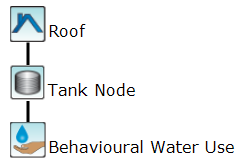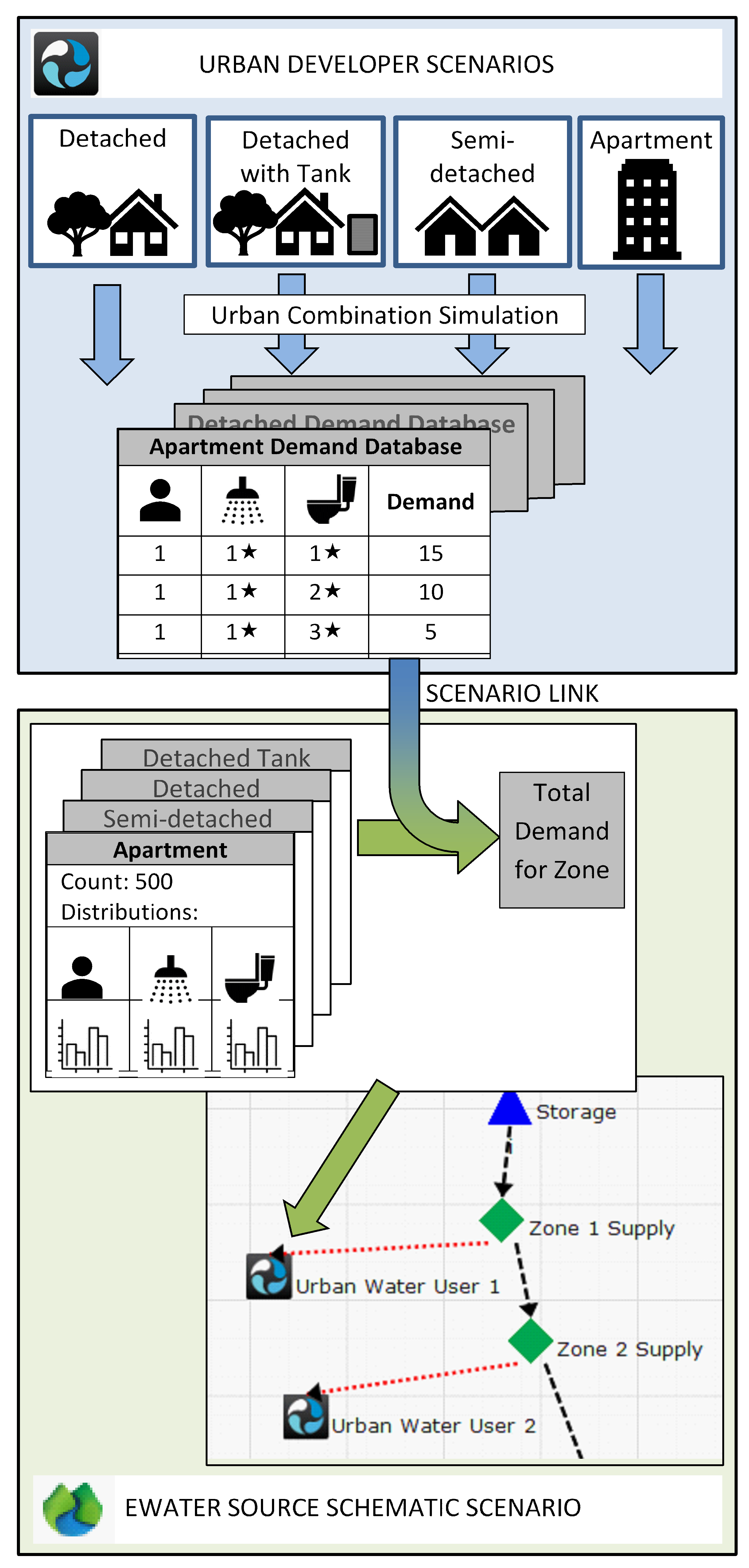The workflow for integrating urban demand models with a Source Scenario proceeds as follows:
Urban Scenario Configuration
- Construct one or more Urban Scenarios, called “demand model templates”, using Behavioural Water Use nodes to represent specific dwelling types, including water supply and discharge configurations, and climate conditions. The Urban Developer scenarios also define a range of different appliance types for each of the end-use categories (showers, washing machines, dishwashers, etc). For example, the user might construct four separate Urban Scenarios representing the following dwelling types (e.g. Figure 1):
- detached dwelling
- detached dwelling with rainwater tank
- semi-detached
- apartments
- Simulate each demand model template (Urban Scenario) using the Urban Combination Configuration to generate a database containing the average water demand for every combination of occupancy and end usage type for the given climate.

Refer to Running Urban Scenarios for further information on configuring and running an Urban Combination Configuration.
Source Scenario Configuration
- Create an eWater Source Schematic (River Manager) or Catchments Scenario representing a river or water supply network and Source Water User nodes.
- Configure the Water User nodes as Urban Water Users (see Urban Water User Node). An Urban Water User node is typically configured to represent a suburb or "demand zone". It defines the number of dwellings and the distributions of occupancies and appliance types in the demand zone. To calculate the total demand, the Urban Water User nodeuses theUrban Combination databases to calculate the water use for each occupancy and appliance type combination.
- Simulate the Source Scenario to evaluate water supply and urban demands.
Note that, the Source Scenario should be simulated under the same climate conditions as the Urban Scenarios to ensure that water supplies and demands are consistent.
Figure 2 illustrates the methodology for simulating the urban demand models within a Source Scenario.


